- Reproduce the typical USB => USB/UART IC => STM32 programming flow.
- This involves the control of the BOOT and nRESET pins. This is normally facilitated via DTR/RTS.
- Provide LOTS of GPIO for the STM32 IC in the form of an expander. TCA6424 in this case.
- Provide a sensor. An IMUU in this case.
- Provide a breakout for the communication channels on the STM32.
- Provide a means of having multiple concurrent USB/power sources plugged in without things going _boom_.
Wing's STM32 Dev Board
A small project to build a STM32 development board using KiCad
 WingTechCorner
WingTechCorner
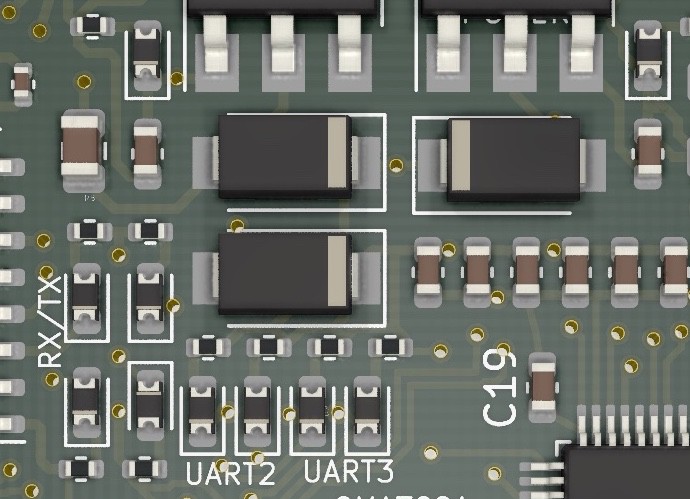
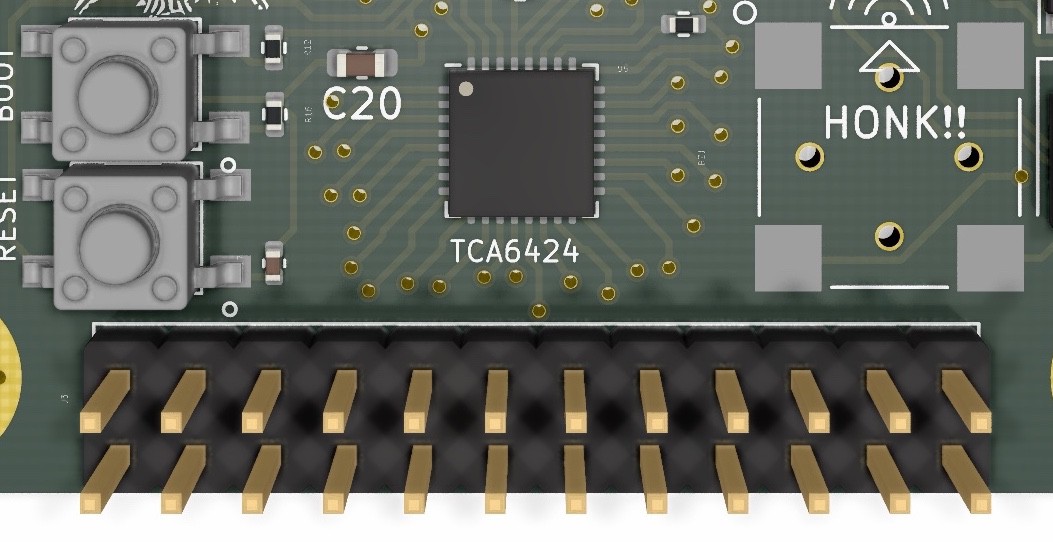

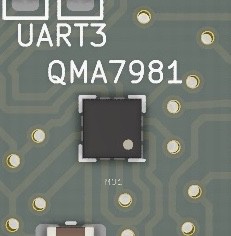
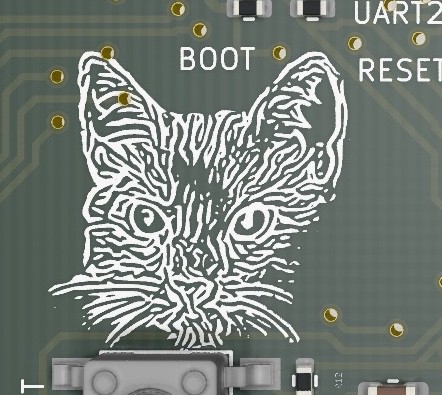

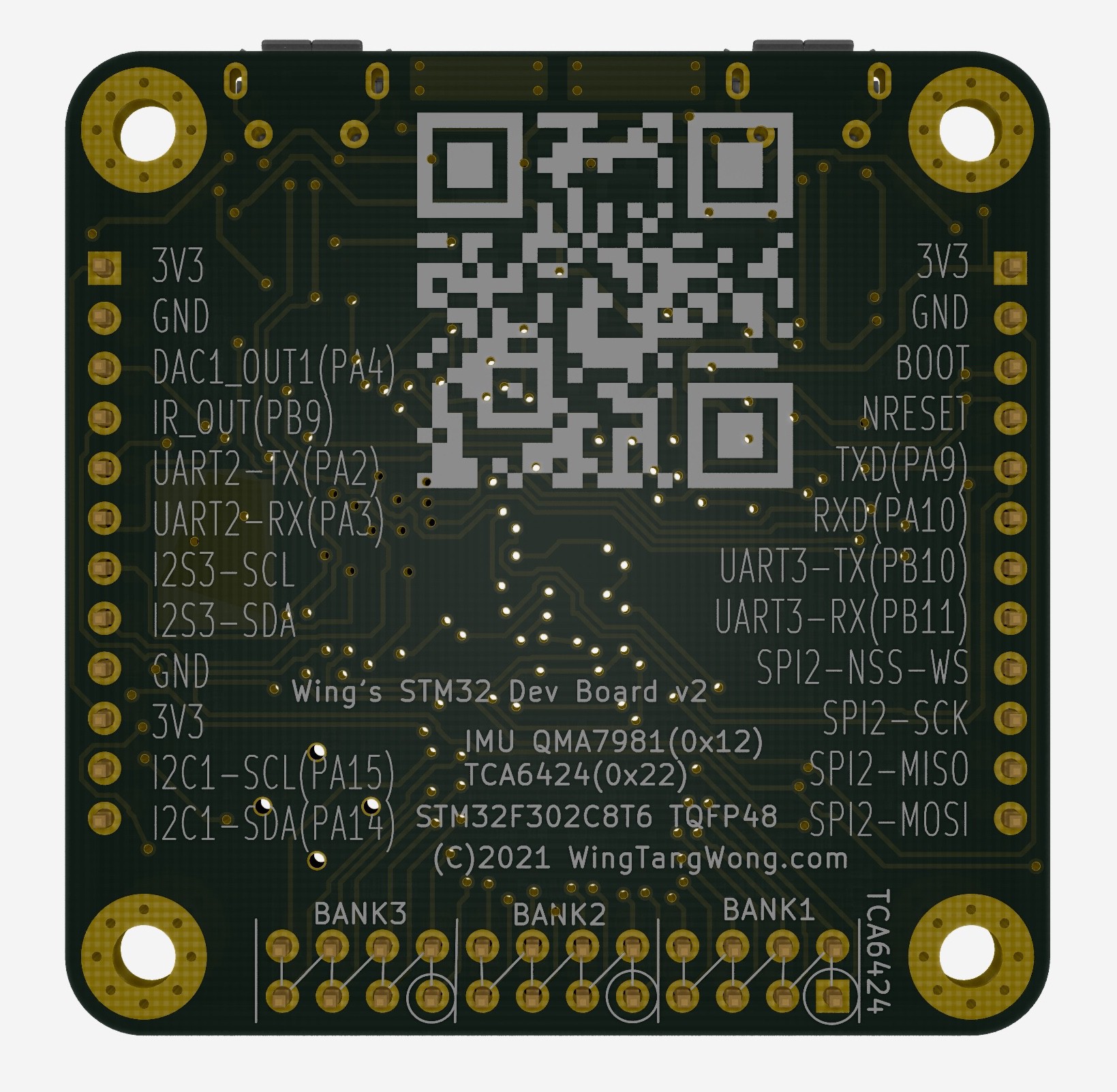
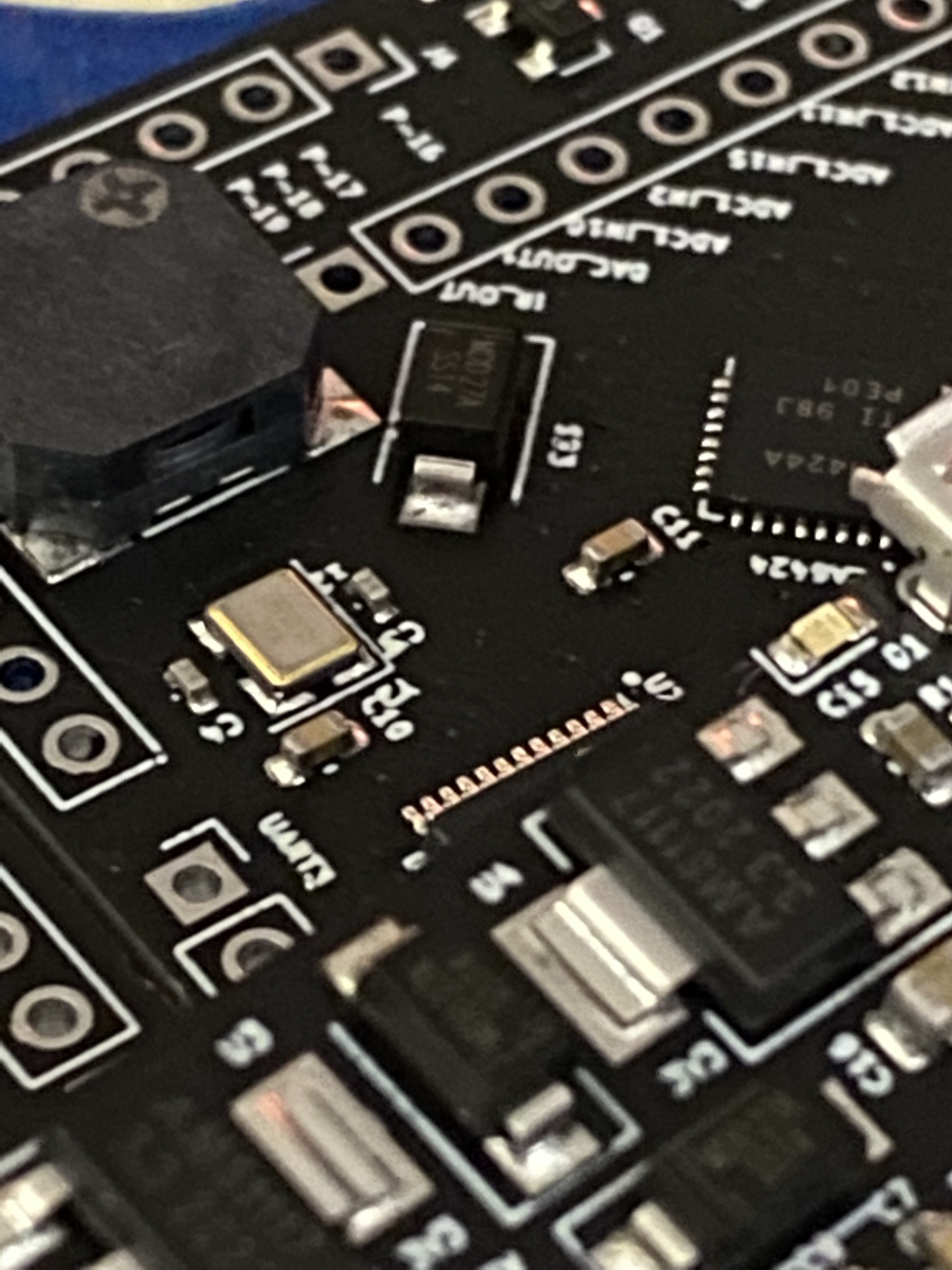

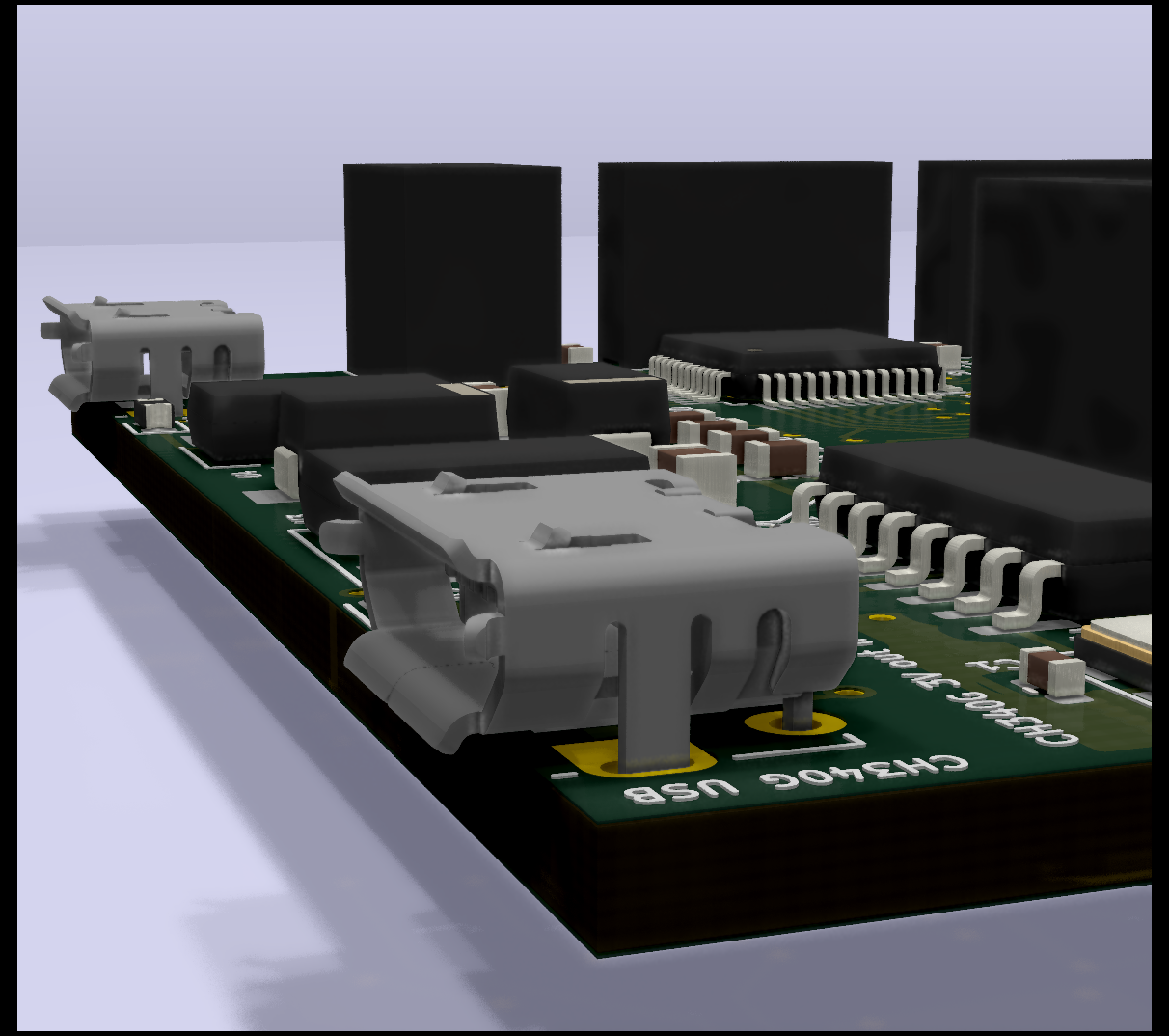
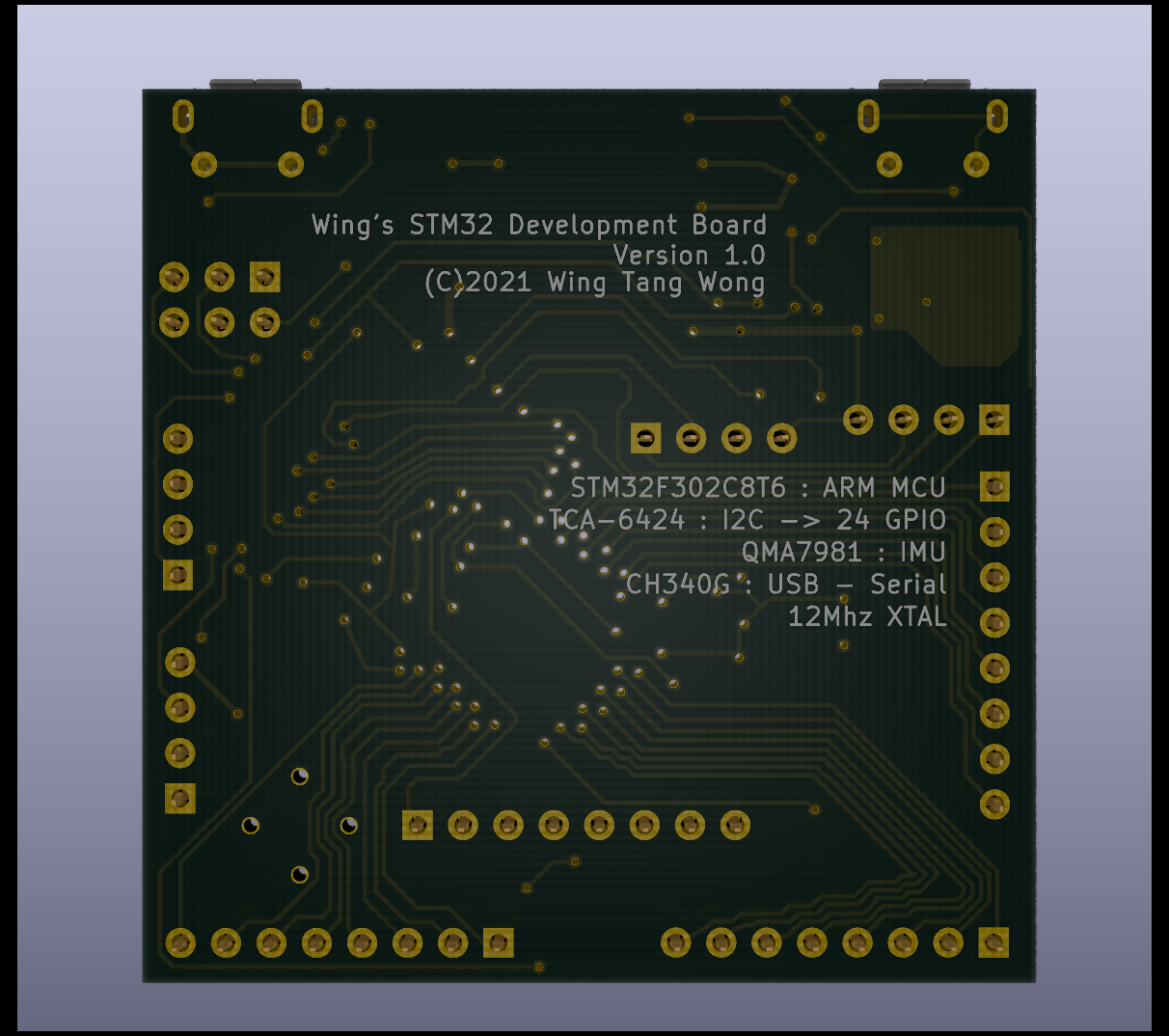
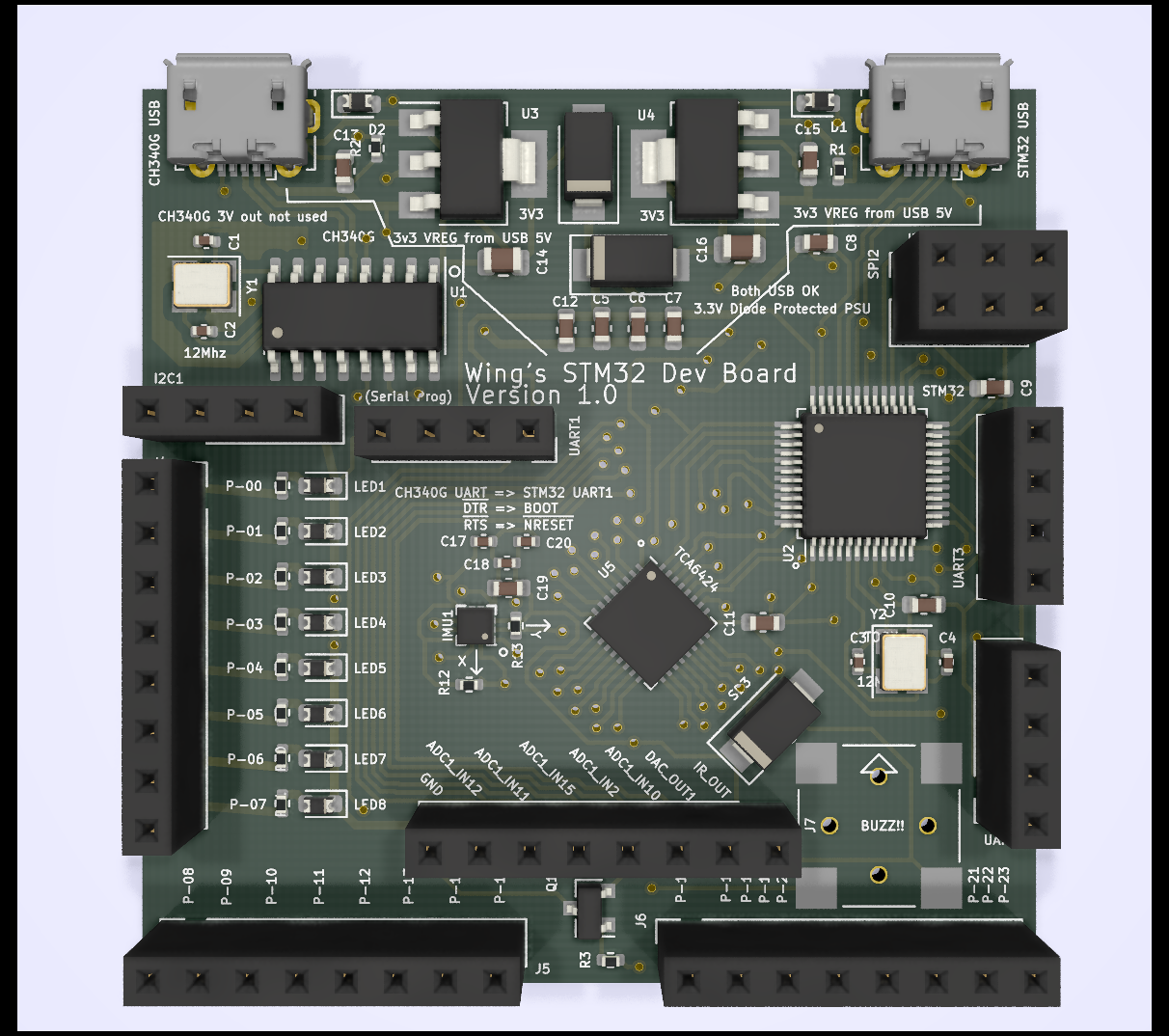
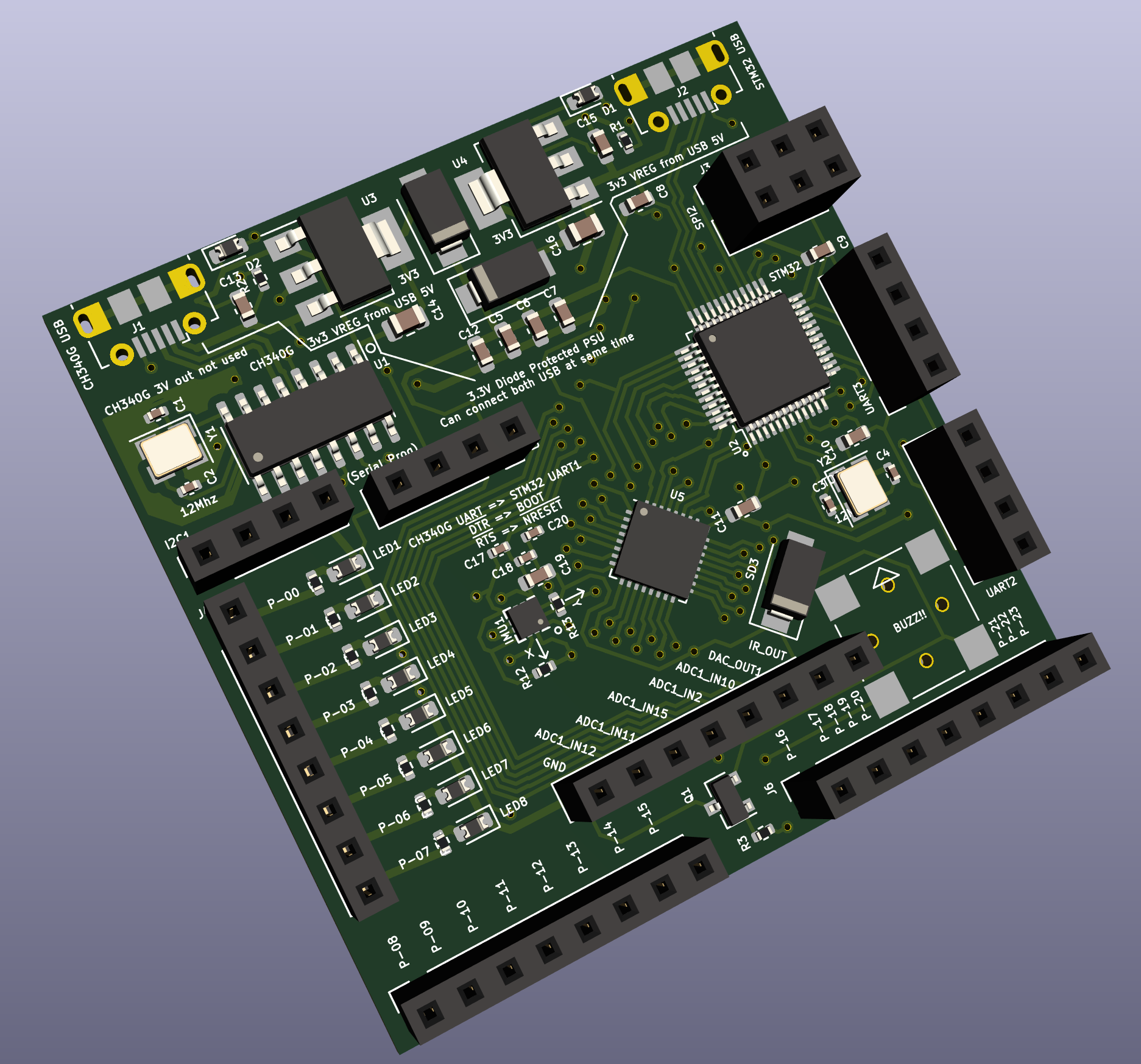
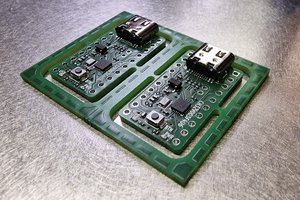
 Alexander Mandera
Alexander Mandera
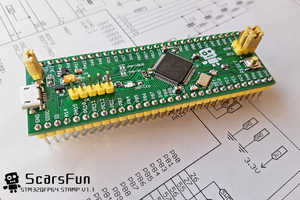
 ScarsFun
ScarsFun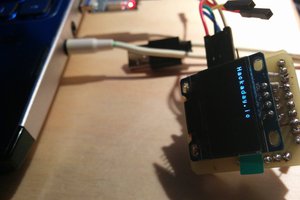
 Jakub Piasecki
Jakub Piasecki
Great Design !
One Question though, how do you connect the CH340G to the STM32?